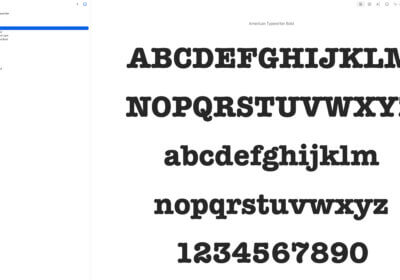Times New Roman is “old” for the U.S. State Department. They change it with another font and they don’t look back.

The U.S. State Department has used Times New Roman as its standard font since February 1 2004.
But now, in 2023, Times New Roman will be changed with another font.
Why the change after almost 19 years of the good and traditional Times New Roman font?
Times New Roman is a serif font, which means it has decorative angular features.
These features have big changes to create accessibility issues to people with certain disabilities that use Optical Character Recognition technology and/or screen readers.
This statement is proven and agreed by most font experts from all over the world.
Knowing this information, Secretary Anthony Blinken directed the Department to use a more accessible font.
The Bureau of Global Talent Management’s Office of Accessibility and Accommodations recommended Calibri font.
This is the default font in Microsoft products and is the best accessibility font in the industry.
Not all U.S. State Department people love Calibri
“I’m anticipating an internal revolt,” said a second Foreign Service officer.
“A colleague of mine called it sacrilege,” said a Foreign Service officer in Asia.
And another person said: “I don’t mind the decision because I hate serifs, but I don’t love Calibri.”
More on font accessibility
There are many things you can do to improve text accessibility.
Changing the font should be the last move you make, and only if the other things don’t work as well as you wanted.
So you can better align the text, the spacing between lines and the contrast in color between the text and the background are things that will create a massive difference in accessibility.
All of these create a much bigger difference than font type and size says Ian Hosking, a senior research associate at the Engineering Design Center at the University of Cambridge.
He says: “Pick a good default font, go to one-and-a-half line spacing, consider a baseline off-white background with black text, and then guide”
Font personalization
I wrote several articles on this subject and this topic will not get old too soon.
People should be able to personalize the fonts.
No matter what devices we use, we should be able to change fonts, picking the right ones for us.
We should also be able to use larger or smaller font sizes, to underline text, and arrange the text.
Many devices already let us do all these things, but there are also lots of others that are rigid.
For example, many TVs don’t let us make too many font changes.
While HBO app is very font friendly and lets the user do plenty of changes.
So yes, Times New Roman Is “Old” For The U.S. State Department
“Calibri has been the default font for all things Microsoft since 2007, when it stepped in to replace Times New Roman across Microsoft Office,” the company said in a memo. “It has served us all well, but we believe it’s time to evolve.”
Exactly as Microsoft dropped Times New Roman font for Calibri, now the U.S. State Department makes the exact same move.
The world has to become a better place for people with disabilities, and this trend will sure continue in the following years in the font industry.
Exactly as the Chinese government asked website owners to use larger fonts so the senior people can better read text, and many other companies and governments start to pay attention to font accessibility, we will all include it in our website designs, landing pages designs, and even ads.
Improving fonts for senior people and for people with certain disabilities is a need for all of us and we should quickly implement it.



